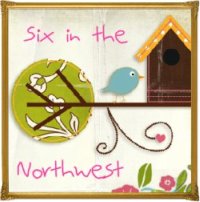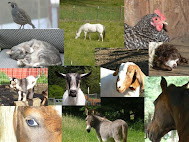Ever heard of "mother culture"? This time, it doesn't refer to cheesemaking. I first came across this term while immersing myself in the Charlotte Mason style of home education. In short, it refers to mothers taking it upon themselves to not let their own educations lag. That might mean always having stimulating reading material on hand, learning to do something that you've never done before, or any way in which you are continuing to enrich your life beyond that of providing for the needs of others..jpg)
As some birthday money has come my way this month, I have decided to take a portion of that and invest in my own "mother culture". I will be dropping my dd12 off at a birthday party in the community that just so happens to be hosting a Flock and Fiber Festival this weekend. It's my hope that someone there will be selling a drop spindle. Yes, I have always wanted to learn how to spin. No,I don't have sheep or fiber goats, but the roving that is used to spin with seems to be easily obtained without the need for your own producing animal. I am so excited you can't believe it. I first saw a drop spindle in action at our County Fair this summer, and the women there assured me that anyone can master it. Now, I don't know when I'll find time to tackle this new hobby, but with winter setting in and more time indoors, I think it can be done.
Being the research junkie that I am, I'm sure that heading to youtube.com and searching for drop spindle will turn up plenty of resources to see instructions first hand. A few swagbuck.com searches also turned about a ton of resources. It seems there are plenty of folks out there more than willing to share and pass on a little bit of their own mother culture to others like me who are wishing to broaden their horizons. I'm not sure if I'll ever get enough fiber spun to actually make something, but the possibilities are certainly tantalizing enough to keep me interested for awhile I'm sure.
If you've got spinning tips for me, I'd love to hear them. I'd also like to find out what other things you've delved into to develop and further your own mother culture. You never know when you, like the women this year at the county fair, will be an inspiration to others!
Friday, September 25, 2009
Drop Spindle Spinning
Tuesday, September 15, 2009
The History of Italian Food
Wow...I feel as if I'm guest posting on someone's blog. Perhaps I should become more familiar with my own blog. But on to the meat of this....
I'm not too much in for heavy literary reads these days, but to my surprise, I find that I'm somewhat enjoying Delizia! The Epic History of the Italians and Their Food by John Dickie. I really only started out to reserve some books from the library on Italian cooking. But it's hard to know what you'll end up with when you show up at the reservation desk to pick up your holds.
Delizia! is a fairly thick book which seeks to explore the culinary history of the country and culture of Italy. I must admit that I've been skimming it in rather large chunks, hoping to find tidbits of interesting information regarding the Italian cuisine I love. In reality, I'm finding out that what we Americans often think of Italian is not actually Italian at all. Here are some interesting finds too:
* Some of the rough, early recipes that John Dickie has unearthed hardly sound edible and they are primarily constructed from animal parts considered refuse here.
* Many foods were heavily spiced as well as heavily sweetened...including meats.
* Italians did prepare pasta made of durham wheat themselves and did not pick up the idea from Marco Polo's journey to the Orient. Yes, they had noodles but they were constructed of rice.
* Polenta for centuries has been considered food barely fit for peasants.
* Pizza is a fairly recent culinary institution.
* Spaghetti and meatballs is a purely American dish created by Italian immigrants designed to show that they were succeeding here in America and could afford the luxury of pasta and meat in one meal.
* Meals in Italy are eaten sitting down and with proper fork and knife.
Not only did I gain a new appreciation for the Italian's basic love of their food, but I learned how the forces within their country even during war times shaped their choices. A book entitled Living Well in Difficult Times: How Women Face up to Economic Crisis(1933) by Fernanda Momigliano caught my attention. I wonder if the title is still available. The reference to this book hinted at its purpose in creating a sanctuary at home during difficult times so that the family could just be a "family" once behind the door of the home using and cooking with real ingredients. I can imagine it might be a good read during our own time of economic unstability.
Another misconception was set straight for me. I did not quite realize how the Italian food we see today is actually a national cuisine that was not available to most Italians before the 1960s as their recipes were definitely regionally based on what was available to them in their locale and climate.
The book concluded with the thought that even though there are many institutionally produced foods becoming more and more available through Italian supermarkets, the people of Italy still see the importance of eating good food and have not dropped to the level that we in America have at times by choosing to trade real food for convenience.
My hope is that I can continue to research true Italian cooking and not just learn to prepare an authentic Italian dish but to be able to carry on the mindset of growing or purchasing real food and preparing it from the heart.


.jpg)












+(2).jpg)


